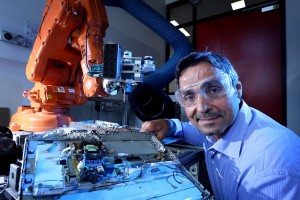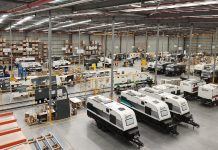The dismantling of most end-of-life products is labour intensive and costly. Many attempts of automating the disassembly process have been unsuccessful. However, researchers from the University of NSW now claim it is possible to automate the entire e-waste recycling process with cognitive robotics.

Image credit: University of NSW website
A joint project by the School of Mechanical and Manufacturing Engineering’s Sustainable Manufacturing and Life Cycle Engineering Research Group (SMLCE) and the School of Computer Science and Engineering has proved a robot can be taught to disassemble LCD screens.
The full research team is comprised of Dr Supachai Vongbunyong, Professor Sami Kara, Associate Professor Maurice Pagnucco, and PhD candidate Wei Hua Chen.
“There are millions of end-of-life products that we don’t know how to disassemble, despite legislation that tells us to do so,” SMLCE founder and project leader Professor Sami Kara said in a news release.
“The biggest problem is uncertainty – the number of different products coming into e-recycling centres and their condition. While humans can deal with product variety, it is still labour-intensive and costly to break down products one-by-one. It is also potentially hazardous owing to the risk of exposure to toxic materials used in electronics. The researchers now believe they can automate the entire process with cognitive robotics. We’ve successfully proven that you can teach a robot to disassemble LCD screens. They break one or two but then they learn and they don’t make the same mistake again. The idea is to remove the display and printed circuit board without damaging them because the rest can be recycled.”
Professor Kara is also considering the possibility of incorporating additional industrial robots into the set-up to handle e-waste as it loaded or unloaded from the robot performing disassembly.
“I’d like to look into using another robot for materials handling purposes. You could isolate them in a cubicle, dump the screens in and have them work 24×7 non-stop,” he said.
According to him, similar techniques could be used to recycle lithium batteries, which can be volatile to disassemble.




















